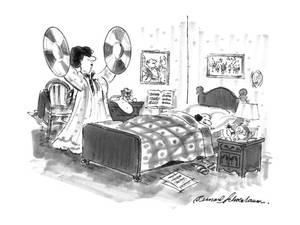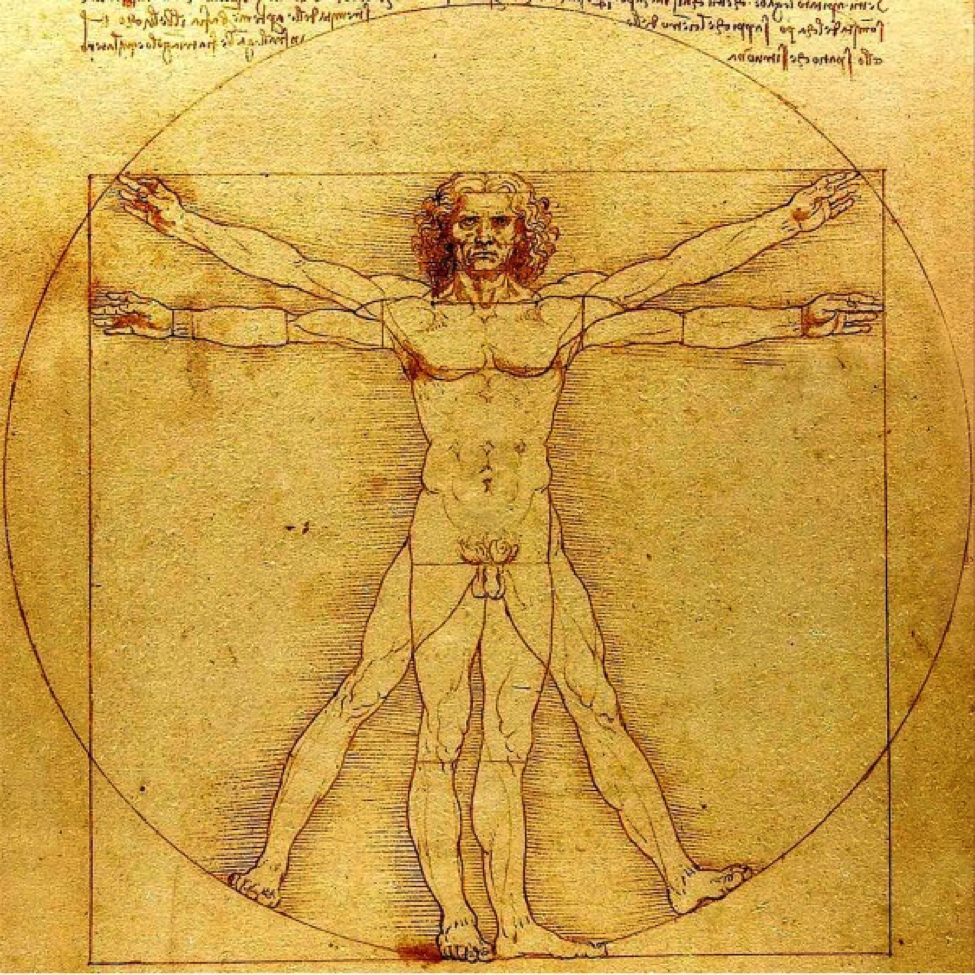The connection between Jerry Seinfeld and Madonna may not be an obvious one at first mention, but both are acutely aware of taboos of the body that make society’s knees quiver and cross. Horny teens and kinky adults of the 90s flipped through the pages of Madonna’s Sex book while controversy stirred amid puritanical prudes like silver spoons in diner coffee cups. As a pop icon, Madonna embodies and toys with the virgin-whore dichotomy that even today’s women cannot seem to escape. Madonna’s coffee table book was, according to the LA Times Book Review, “a book so racy that it came in a foil wrapper.” With page after page of black and white photos featuring Madonna in sexual poses with women, men in bondage, men with men, and more, Sex took sexual taboos and made them chic. In December 1992, just a couple months after Madonna’s book release, Seinfeld aired “The Pick.” The episode makes light of taboos like exposed nipples (remember the uproar over Janet Jackson’s unrehearsed “nip slip” at the Super Bowl in 2004?) and nose picking. When Kramer photographs Elaine for her Christmas card, he unwittingly exposes her nipple to the world, prompting her co-workers to start calling her “Nip” and her sister to chew her out for exposing her teenage nephew to the troublesome body part. To try to soothe Elaine’s worries over the exposure, Jerry and Kramer lift their shirts to remind us all that men have nipples, too. Why should the appearance of woman’s nipples be as taboo as...picking one’s nose? While scratching the outer rim of his nostril at a stoplight, Jerry’s Calvin Klein model girlfriend thinks she sees him picking his nose, and as a result she dumps him. He tries to explain, but her judgment holds fast. Despite being a cultural taboo, nose picking is fairly common, especially among children and teens that push the taboo beyond picking by booger eating and flicking. Violating taboos has its consequences, namely harsh judgment and treatment from others, but let Elaine remind us of a certain truth with her response to those who judged her: “Let me tell you, I didn't intentionally expose myself, but, now, I wish I had. For it is not me, but you who have been exposed, for I have seen the nipple on your soul!”
The Economy of Abortion: A Very Short History
Like all things humans argue about, abortion is a product of language, history, and economics. By definition, abortion is the termination of a pregnancy by removal of the embryo or fetus before it can live as a body outside the female uterus. The modern controversies over abortion—invariably imbedded in religious rhetoric—are grounded on the definition of when “life” begins. Thus, the arguments about the definition of when the embryo/fetus becomes “a human being”.
Read MoreElvis's Body
It’s impossible to understand in our current age of 24/7 public pornography and profanity how in 1956 the seemingly innocuous body movements of a 21-year-old former truck driver form Tupelo, Mississippi could have caused such a nationwide sensation. Elvis Presley had already become a star in the south after recording five singles on Sam Phillips’ Sun Records label in Memphis. In November 1955 Elvis’s manager, Coronel Tom Parker negotiated a contract with RCA records that propelled Elvis into the national spotlight. Parker and RCA understood that to promote Elvis the new popular medium of television would be key. Thus, Elvis was quickly signed to make television appearances beginning in January 1956. Elvis first appeared on The Dorsey Brothers Stage Show on January 28. Backed by Scotty Moore, Bill Black and D. J. Fontana, he performed “Shake Rattle & Roll / Flip Flop & Fly” and “I Got A Woman.” Although Elvis had been driving southern audiences wild with his gyrating and singing, nobody expected the uproar that his television performances would create. Somehow, to have a white man singing black music in your family living room was just too much for 1950s America. But that body, gyrating and pulsating to this absolutely sexual music was downright indecent, vulgar, and pretty much pornographic. It was Elvis’s performance of “Hound Dog,” on the Milton Berle Show on June 5, 1956 that literally created a nationwide furor unlike anything pop culture had seen in the 20th century. Without his guitar, with just the mike as a prop, and with Moore, Black and Fontana following every movement, the King began the song in normal rhythm and then, to the frenzy of the studio audience and millions watching with their children in homes across America, Elvis slowed the song down to a pulsating tempo articulated with lower body movements and gyrations that would change American culture forever. By the next day newspapers were describing the performance as everything from a striptease to unimaginable vulgarity that would surely lead to the derangement of American society. “Elvis the Pelvis” was born. Berle himself would receive some 400 thousand letters from angry viewers, many saying they would never watch the show again after seeing that “vulgar man that jives and wiggles his backside and butt—it’s disgusting!” Many of course saw this as directly related to the fact that Elvis was singing black music. Ed Sullivan said he would never have Elvis on his show, but eventually Elvis would appear on America’s most watched variety show three times, the last time, on January 6, 1957, famously shown only from the waist up to satisfy worried CBS censors. No matter, every movement Elvis made resulted in absolute pandemonium in the audience of young girls. Perhaps to help prop up his reputation, Elvis sang the spiritual “Peace in the Valley” on that last appearance. At the end of the show Sullivan declared Elvis to be “a real decent, fine boy.” One thing is certain, in 1956 Elvis’s body, as much as his voice, changed the world.
Milton Berle Show, April 3 1956.
Ed Sullivan Show, Oct 28 1956.
Ed Sullivan Show, Jan 6 1957.
Crash Test Dummies
Those words might bring to mind the late ‘80s Canadian rock band famous for that “Mmmm Mmmm Mmmm Mmmm” song about a boy whose body “cars had smashed so hard,” but crash test dummies have been enduring crashes since Samuel W. Alderson created the first human simulacra, “Sierra Sam,” in 1949. Sierra Sam, used to test aircraft ejection seats, was developed as a result of cadaver research and animal studies, bodies that had been used to test and improve automobile safety since the 1930s. In fact, bears and pigs were still test crash subjects as late as 1980. In the ‘80s, public service announcements from the National Highway Traffic Safety Administration anthropomorphized crash test dummies Vince and Larry, making them slapstick spokesmen for seat belt safety. In the early ‘90s, the two dummies made their way into popular culture, as action figures released by Tyco Toys and characters in the half-hour TV special The Incredible Crash Dummies. Video games and comic books also featured them. Today’s crash test dummies don’t get as much attention, though they have become more “sensitive” and representative of the ways the human body responds upon impact. Car accidents have continued to increase as well given that drivers are more distracted by texting and talking on the phone while driving. Over 300,000 severe-injury accidents are caused yearly by people who are texting while driving. Sounds like we all still “could learn a lot from a dummy.”
The Body of Motherhood in the Age of the Artificial Uterus
While some speculate the use of an artificial uterus could make women lose their reproductive power and as such their worth, in terms of biopower, to society, others argue the use of an artificial uterus can liberate women from the psychical toll and discomfort of pregnancy. Perhaps the more pressing issue is what the artificial uterus could mean for abortion laws.
Read MoreDescartes' Revenge
For Descartes, the mind needs to be the controlling force in human existence just as for yogic thought the mind must be the guide of all individual being—the body simply cannot be allowed to rule because (and on this point yogic thought is quite more adamant than Cartesian thought) the body is the root of futile desire.
Read MoreDeleuze’s Body Without Organs Explained to Children
Philosopher Gilles Deleuze would say that not one organ actually produces anything, all productions are collectively produced by the entire body, and actually, by more than the body but a complex of bodies and environments.
Read MoreExploding Head Syndrome
Most people have watched a cartoon character be startled awake by his rival banging cymbals or blowing a horn, but few people have experienced the startling sound only to wake up alone in a quiet room. Approximately 10-15% of the population have experienced this auditory hallucination and parasomnia sleep disorder called “Exploding Head Syndrome” or “Episodic Cranial Sensory Shock.” EHS sufferer Niels Nielson described his experience as a “sudden crescendo of noise, then a profound and jarring explosion of sound, electrical fizzing and a bright flash...”[1]
Since the event is a hallucination, people who experience it are often fearful it is a symptom of a much more serious condition or bashful to report the symptom to their doctor. The nature of condition also lends to the belief in the supernatural or alien abduction conspiracy theories. Psychology professor Brian Sharpless told BBC, “People can sense these strange explosions in their head, and they may think they’ve had something implanted in their brain. Or they feel this surge of electricity and they think they’ve been shot by some kind of new energy weapon.”[2]Psychologist and parapsychology researcher Simon Sherwood discovered a link between those who experience EHS and a belief in the supernatural.[3]
Though no one knows exactly what causes EHS, hopefully few people are losing sleep in fear of an alien abduction. What researchers suspect is that the sound hallucination is the result of the brain shutting down. Sharpless told Time: “‘The way I usually describe EHS is by considering the brain to be a computer,’ says Sharpless. ‘You go through a series of steps when you’re shutting down your computer, and your brain does the same thing. As you go to sleep, your auditory and visual neurons are normally inhibited. What we think happens during EHS is that instead of shutting down, these neurons fire all at once. When they do they, they create a perception of sound, which is why sufferers hear the loud noises.”[4]
[1]Helen Thomas, “‘I Have Exploding Head Syndrome’” BBC. April 10, 2015. http://www.bbc.com/future/story/20150409-i-have-exploding-head-syndrome
[2]Ibid.
[3]Rod Tanchanco, “How to Defuse Exploding-Head Syndrom,” The Atlantic. Jan. 30, 2015. https://www.theatlantic.com/health/archive/2015/01/how-to-defuse-exploding-head-syndrome/384553/
[4]Kate Samuelson, “What it’s Like to Have Exploding Head Syndrome,” Time. July 17, 2016. http://time.com/4839530/exploding-head-syndrome/
The Body of Jesus
When studying the historical Jesus, it becomes clear that much of the efficacy of that most famous of itinerant preachers was directly related to his physical body. Most historically important was the manner in which Jesus of Nazareth collapsed the symbolic and real precisely through his body.
Read MoreLet Olivia Newton-John's 'Body Talk'
Released in September 1981, Olivia Newton-John’s “Physical” was a chart-topping hit because its sexy lyrics and Grammy Award-winning video embodied the aerobic revolution of the 1980s—an era that took short-shorts and leotards out of the disco and into the gym or living room where the people wearing them exercised with fitness icons such as Jane Fonda and Richard Simmons.
Read MoreExquisite Corpse: An Homage to Stephen Hawking
“God not only loves to play dice, but confuses us by throwing them
where they can’t be seen.”
Exquisite Corpse: An Homage to Stephen Hawking
Oh! That the deepest, most troubling questions
are now sung by a zero-one voice.
In death’s black hole, where matter turns matterless,
he matters not less but more—
The universe can spontaneously create itself
out of nothing. The mind is a rapid expanse,
the body a slow collapse.
All-too-human no god ever fashioned,
he asks, what is our future as we emerge
from our past? The gods have been laughing
since Prometheus sat upon his rock, unable to see.
Can we hear the heartbeat in that digitized voice
that sings us the answer key?
'Dem Bones' and Ezekiel's Fantastic Wheels
Sung in classrooms and at Halloween parties across the country, “The Skeleton Song” teaches children basic anatomy to a catchy tune, making it easy to remember “the thigh bone is connected to the hip bone.” However, “The Skeleton Song,” also known as “The Skeleton Dance,” is a secularized version of writer and Civil Rights activist James Weldon Johnson’s “Dem Bones.”
Read MoreBody Terror as Territorialization
It is not surprising that the notion of bodily violation is ubiquitous in the horror genre: from Dracula to Alien, the idea that some supernatural/biological Other can enter our bodies is as old as myth and folklore, the most ancient and universal notion being bodily possession by demons.
Read MoreBody Worlds: Preserving Hope in Immortality
Body Worlds’ success doesn’t stem from displaying real cadavers (viewers of the first exhibitions were afraid to approach the corpses because they were posed as corpses), but from displaying real cadavers in freakish poses.
Read More"Cavity Sam" and the Clinical Gaze
In 1964, University of Illinois industrial design student John Spinello invented the classic Milton Bradley game Operation. Currently made by Hasbro, his invention carries an estimated franchise worth of $40 million even though Spinello sold it to MB for a mere $500. The game features the cartoon-looking patient “Cavity Sam” lithographed atop an operating table in which there are a number of cavities filled with plastic figures of silly ailments, such as Brain Freeze, Writer’s Cramp, and Water on the Knee. The objective? Players must “operate” on Sam by removing the ailments with a metallic pair of tweezers, taking care not to touch the metal edges of the cavities. Should the tweezers bump the edge, Sam’s red bulb nose lights up and a startling electric buzz zaps the player. But, should the player successfully avoid the edge of the cavity opening, he or she earns cash just as a doctor or specialist would--$1000 for the Bread Basket, double if the player holds a Specialist card. Evidenced here is Michel Foucault’s notion of the “clinical” or “medical gaze.” Essentially, the progressive development of knowledge about the human body has led to modern society’s profound trust in medicine to cure disease and save lives, thus rendering medical knowledge powerful and valuable. Operation signifies the gaze in action—the body is simultaneously dehumanized by the medical separation of the patient’s body from his or her whole person or identity (i.e. the disease not the person is treated), and the body serves as a “cash cow” that sustains (and bloats) the healthcare market. See how the Specialist earns more, and governments use medical knowledge for capital gains. Global healthcare expenditures, for instance, are projected to reach $8 trillion dollars by 2020 in order to meet the increase in life-threatening ailments, such as cardiovascular diseases, cancer, respiratory diseases, and diabetes. We could question why, with all this progressive medical knowledge, such diseases are on the rise instead of the decline. Or, we can keep playing games. Whatever the choice, think on Foucault’s words: “Knowledge linked to power, not only assumes the authority of ‘the truth’ but has power to make itself true.” And, remember, despite Cavity Sam’s anatomy, the human body has no Wish Bone.
Bodies Make the World Go 'Round
At this post-intelligence moment in human history, if we asked Americans who is the greatest philosopher of love the answer might be Matthew Hussey, bestselling author of Get The Guy: Learn Secrets of the Male Mind to Find the Man You Want and the Love You Deserve, or perhaps Ellen Fein and Sherrie Schneider authors of that singularly successful Bible of man-hunting, The Rules: Time-tested Secrets for Capturing the Heart of Mr. Right. But for those old-schoolers out there, Plato is the man. For Plato, “The Rules” of love were all about the body, the beautifully proportioned and moving body. According to Plato, humans are attracted to each other because we literally fall in love with our lover’s body ratios. Here is the theory: Having learned the mystical qualities of numbers from that great romantic from the island of Samos, Pythagoras, Plato would develop the theory that love is more or less grounded on bodily proportions, and, most importantly, on the effective movement of well-proportioned bodies. This was literally of cosmic significance given that Plato, thanks again to Pythagoras, believed that the beautiful movements of the human body were synchronically connected to the movements of the soul which in turn were in concord with the movements of the heavenly bodies, which of course were effectively and harmoniously moved by that primordial mover, the One (God). If you notice the musical connotations here, that is not accident. Plato made the grand connection between the movements of human bodies and souls with those of the macrocosm through a great analogy of musical harmonies and concord. Plato got this idea also from Pythagoras who had identified the secrets of music as proportional ratios supposedly while loitering about in a shop in Samos sometime around 590 BC. Plato would go on to articulate these ideas in many of his most romantically inclined bestselling dialogues, the Symposium, and the Phaedrus in particular. Basically, when we fall in love we are literally attracted to and desirous of the lover’s beautiful bodily proportions which move beautifully and thus move us. That is, the lover’s body moves our soul, and this “vibration” is ideally in harmony with the proportions of the heavenly bodies. This corporeal musicality would be called the Great Chain of Being or the Music of the Spheres. Plato would say that in the end what we really desire when we are in love, what we are actually attracted to, is the One given that we simply want to be together with that primordial Lover, God, our ultimate soulmate. Thus, Platonic love is really the wish to un-forget (what Plato called anamnesis) that we were once in concord, corporeally, with God. It’s all about being moved to be with God. Love is the calling to be moved back into the body of God. That’s why we say, love makes the world go ‘round, because according to Plato, it literally does.
Body Language(s)
Before words, our bodies speak through eye contact, facial expressions, gestures, and touch. We can shirk or shrink to become small, even invisible. Or we can expand our bodies to command power or intimidate others. Yet, the language of the body isn’t limited to these nonverbal cues. Dance, for instance, is a universal element of culture. While the aesthetics and roles of dance may vary across societies, its ubiquity suggests it derives from natural instinct. Looking back, bodily gesture was the primordial human communication, and all ritual began with dancing as the bodily compliment to music. In ancient cultures, dance was always a way to make the life force present as a reminder of death. One of the first known dance rituals was the dance-praise ritual to Osiris, the resurrected god of life-death in ancient Egypt, a ritual meant to animate his eternal spirit.
Other movement practices, like yoga and tai chi, work to transcend barriers between the physical and spiritual, body and mind. Originating in India as early as the 6th century BCE, yoga is an austere Hindu spiritual discipline that requires adopting specific body postures, breath control, and meditation. Practiced in the West mostly for health and relaxation, yoga at its root intends to release suffering. Through breath and the transitions between movement and stillness, it intends to raise and expand consciousness from the individual self to being coextensive with everyone and everything. Tai chi, the Chinese martial art said to have developed in the 12th century, similarly opens pathways in the body, allowing “qi” (the life force) to flow freely for good health and the practitioner to respond to outside forces with appropriate change. So too, dance is thought to offer health and healing benefits through its communicative, physical, and emotional expression. What’s more, these body languages illustrate a cosmic knowledge latent within all of us. We just have to be willing to learn.
The 2016 premiere of The OA presented audiences with a five-movement dance sequence that, when done "with perfect feeling,” is the key to healing sickness (in individuals and in societies), resurrecting the dead, and opening a pathway to another plane of existence. The significance of such movements may seem unclear to Westerners, but perhaps that’s due to cultural values that pressure us to live in our minds instead of in our whole beings.
Sorry, Leonardo Was Correct (Again!): The Body Is a Perfect Machine
That doggedly curious Milanese jack-of-all-trades, Leonardo da Vinci, perhaps our first great scientist, believed that the human body was a great machine designed by the greatest designer of all time, God (as he would put it “Il corpo é una macchina perfetta”). Nonetheless, humans have continued to view the technologization of the body as a Frankenstein-like aberration of nature. For humans, the more benign and comforting idea is to see technology as but a supplement, a prosthetic extension of the “natural” body. But, as we take on the biotechnological possibilities of posthumanism, we need to take heed of historical and philosophical arguments that confirm Leonardo’s discoveries. When humans become cyborgs, we will simply be a different type of machine because, as Leonardo showed us, we have always been machines. At the core of this notion is the idea that to be human is grounded on scratching. This great discovery was made by our modern version of Leonardo da Vinci, that great Algerian jack-of-all-possibilities, Jacques Derrida.
Derrida’s deconstruction of the privileged position of speech over writing was based on his critique of presence. According to Derrida, nothing is actually ever present for two key reasons, one ontological and the other linguistic. Ontologically, nothing is ever present because at no moment in time is anything, including the subject of perception, ever ontologically static; nothing is ever at an absolute standstill. All matter throughout the universe is always already changing, developing, and moving; therefore, nothing can be said to be but can only be said to be at a state of becoming. Nothing ever is in terms of time and space given the physical flux of the material universe. Moreover, in terms of language, the irreducible code for human representation, nothing is also ever present given the constant and infinite movement between signifier and signified. Speech, since Plato, has been viewed as more truthful than writing because speech is understood an immediate expression of the idea present in the mind, whereas writing is removed from the presence of the actual thought, making it, literally, an after-thought.[1] That such a view would of course privilege the mind over the body is clear, most significantly for Derrida, from Descartes to Husserl. But this deconstruction is not the end of the story.
When Derrida then articulates the notion of the trace as the essence of writing—writing as γρᾰ́φω (gráphō) “to scratch, to cut,” he was not simply applying etymological precision but was uncovering the basic function of the human body.[2] As his student Bernard Stiegler argues, the zero-point of the human is what he does to involve himself in the physical environment, technics.[3] As no other species, humans do not simply make tools but make tools to produce other tools. As such, humanity is essentially technological in that the human and the technological have always coevolved. To be human is to be technological and the medium, the media, of this co-evolutionary relation is the body and as such the body is thus the ontological condition of humanization itself. I am embodied, therefore I am.
[1] “Plato’s Pharmacy,” Dissemination, trans. Barbara Johnson (Chicago, 1981), pp. 61-171.
[2] Of Grammatology, trans. Gayatri Chakravorty Spivak (Baltimore, 1976).
[3] Technics and Time, 1: The Fault of Epimetheus, trans. George Collins and Richard Beardsworth (Stanford, 1998).











